Gabapentin is a helpful medication for many different conditions. However, it also carries the potential for abuse. In this article, we’ll answer the question: is gabapentin addictive? To fully understand the risks of gabapentin abuse and addiction, it’s also important to understand what the drug is, who it can help, and how it works, in addition to signs and symptoms of misuse.
What Is Gabapentin?
Gabapentin, prescribed under the brand name Neurontin, is a medication that treats neuropathic pain and is an adjunctive therapy for partial seizures in adults with epilepsy. It works by affecting certain chemicals in the brain that send pain signals across the nervous system.
There are a couple of primary types of gabapentin:
- Capsules: Gabapentin capsules are commonly available and are taken orally. They come in various strengths, typically ranging from 100 mg to 400 mg.
- Tablets: These are also oral but are usually available in higher strengths than capsules, such as 600 mg or 800 mg.
- Oral Solution: For those who have difficulty swallowing pills, gabapentin is available as a liquid solution, which generally contains 250 mg of gabapentin per 5 mL of liquid.
- Extended-Release Tablets: These are designed to release gabapentin into the body more slowly over time. Brand names like Gralise are used specifically for treating postherpetic neuralgia (nerve pain after shingles).
What Is a Normal Dose of Gabapentin?
Dosages of gabapentin vary depending on the issue for which they are prescribed.
Here are some of the standard dosages:
- Neuropathic pain in adults:
- First dose: Usually taken orally, 300 mg is administered once on the first day and again twice a day on the second.
- Maintenance dose: If necessary, the dosage may be raised to 600 mg three times a day.
- Postherpetic neuralgia in adults:
- The first day is usually 300 mg; the second and third days, 300 mg twice a day and three times daily, respectively.
- Epilepsy in children and adults: The individual’s age, weight, and kind of epilepsy all influence the dosage. The dose starts smaller and then is progressively raised as needed.
- Off-label uses (various): Off-label gabapentin is occasionally employed to treat conditions such as bipolar disorder, migraines, and anxiety. The precise dosage depends on individual factors.
What Can Gabapentin Treat?
Originally developed to treat epilepsy, gabapentin is also effective in alleviating neuropathic pain. This includes conditions like diabetic neuropathy, post-herpetic neuralgia (pain following shingles), and central neuropathic pain. It’s also been used off-label to treat drug and alcohol withdrawal seizures. Gabapentin for anxiety is also a common off-label usage of the drug.
The Science of Gabapentin: How Does it Work?
It’s actually not fully understood how gabapentin works. We know it reduces the influx of calcium ions into the nerves. This, in turn, inhibits the release of glutamate, a neurotransmitter that plays a key role in learning and memory. While it’s obviously essential to have some glutamic activity in the brain, too much is neurotoxic and can lead to neurological disorders.
Gabapentin also stimulates the release of GABA. GABA, short for gamma-aminobutyric acid, regulates the neurons. It keeps them from becoming too over-active, which can lead to anxiety (think, for example, of a mind that’s racing). By reducing neuronal activity, gabapentin promotes relaxation, as well as stabilizing mood.
Get confidential help from our addiction treatment specialists in Orange County. Call to join our rehab program today!
Call 866-881-1184Is Gabapentin a Controlled Substance?
In some states, yes.
However, Gabapentin is not currently restricted under the Controlled Substances Act, which is the main law governing federal guidelines for drug availability. It is, however, restricted by a number of states as a controlled substance.
States where gabapentin is considered a controlled substance include:
- Alabama
- Kentucky
- Michigan
- North Dakota
- Tennessee
- Virginia
- West Virginia
In these states, gabapentin is considered a Schedule V controlled substance. This is the lowest tier of severity.
In addition, a variety of other states have mandated gabapentin reporting. This means that when a gabapentin prescription is filled, it’s recorded in the state’s Prescription Drug Monitoring Program (PDMP).
States where this is the case include:
- Connecticut
- Kansas
- Massachusetts
- Indiana
- Washington D.C.
- New Jersey
- Minnesota
- Nebraska
- Ohio
- Utah
- Wyoming
- Oregon
PDMPs are there to monitor drug prescriptions. They can provide health authorities with timely information about possible emerging prescription drug addictions, allowing for a quick and targeted response.
Is Gabapentin Addictive?
In a study of 140 patients on gabapentin for neuropathic pain, just under 18% were found to be abusing the drug.
However, that isn’t the full story. The study found smoking and alcohol use risk factors associated with gabapentin abuse. Another study, this one on 250 former inmates, found opioid addiction a huge contributing factor to gabapentin abuse. It found that when participants with an opioid addiction were asked, 26% reported using gabapentin recreationally. That figure dropped to 4% for those without any opioid addiction.
In other words, it’s not really accurate to consider gabapentin addictive in the same sense as drugs like opioids, benzodiazepines, or alcohol. While gabapentin can cause physical dependence (especially with long-term use), it generally does not induce strong cravings or compulsive drug-seeking behavior typically associated with addictive substances.
More often than not, people who abuse gabapentin are those who already engage in addictive behavior. In other words, they abuse gabapentin simply because it is a drug and would likely do the same for other drugs, addictive or not.
That being said, while gabapentin is not inherently addictive, any substance has the potential for abuse and dependence, especially when used in high doses or in combination with other substances.
If you or someone you know is struggling with gabapentin abuse or dependence, seeking help from a healthcare professional is essential.
Why is Gabapentin Habit-Forming?
Gabapentin is habit-forming due to its effects on the brain and its use patterns.
Gabapentin works by affecting the way nerves communicate in the brain. It does this by binding to certain channels on nerve cells, which influences the release of neurotransmitters and reduces the excitability of neurons. This can lead to feelings of calmness, relaxation, or even euphoria in some individuals, which might encourage repeated use.
There’s also the relief the drug is meant to provide. For individuals with chronic pain or seizures, gabapentin can provide significant relief. This relief can lead to a psychological desire to continue using the medication, not necessarily for a “high,” but to maintain freedom from pain or seizures. Over time, this can evolve into a habit where the individual feels they need the medication to function normally.
Looking for quality substance abuse treatment that’s also affordable? South Coast accepts most major insurance providers. Get a free insurance benefits check now.
Check Your CoverageThe Rise of Gabapentin Abuse
Gabapentin is subject to few legal restrictions, so it can be obtained and used in large quantities. The fact that it is not an opioid also contributes to a false sense of security some people have regarding the drug. Unfortunately, this misunderstanding often leads people to take prescription gabapentin in doses far exceeding the recommended amounts. This can often lead to dependence.
Gabapentin is also becoming more and more popular as a street drug. “Gabbies,” as they’re known colloquially, can be used to enhance the high from opioids. They can also be used in their own right to get high, and their effects aren’t blocked by traditional medications meant to stop people in recovery from using.
What Are the Signs and Symptoms of Gabapentin Abuse?
Recognizing the signs and symptoms of gabapentin abuse is important, especially given its increasing use and potential for misuse.
Some key signs and symptoms of gabapentin abuse include:
- Euphoria
- Improved sociability
- A marijuana-like ‘high’
- Relaxation
- Sense of calm
Other general signs and symptoms of drug abuse, which can apply to gabapentin, include:
- Increased tolerance
- Withdrawal Symptoms: Experiencing withdrawal symptoms when not taking gabapentin, which can include agitation, confusion, rapid heart rate, sweating, and, in severe cases, seizures.
- Doctor-shopping: Visiting multiple doctors or clinics to obtain more gabapentin prescriptions.
- Neglecting work, school, or family responsibilities in favor of drug use.
- Mood swings
- Physical Symptoms: Dizziness, drowsiness, uncoordinated movement, slurred speech, and memory problems.
- Social withdrawal
- Continuing to use gabapentin despite experiencing negative health, social, or legal consequences
Some of these signs and symptoms are also related to the underlying conditions for which gabapentin is prescribed, such as neuropathic pain or seizures. Therefore, a comprehensive assessment by a healthcare professional is necessary to distinguish between appropriate medical use and potential abuse.
If gabapentin abuse is suspected, it’s crucial to seek professional help. Treatment may involve a gradual tapering of the medication to avoid withdrawal symptoms, counseling, and support for any underlying health issues that may have contributed to the abuse.
What Is Gabapentin Treatment in Orange County Like?
Gabapentin treatment in Orange County involves a gradual tapering of the dose to avoid seizures or other harsh withdrawal symptoms.
Gabapentin use can usually be gradually reduced over a week, but the specific timing will depend on your specific circumstances. Slower tapering may allow for a safer withdrawal of the medication. Experts recommend reducing the daily dose by a maximum of 300 mg every four days.
After completing gabapentin detox, participating in a rehab facility is an important step toward sustaining your sobriety and preventing recurrence. Since gabapentin is often used together with other drugs, like opioids or cocaine, polysubstance abuse treatment would likely be required as well. Polysubstance abuse treatment involves a personalized approach, starting with medical detox and then utilizing a mix of medication, therapy (like CBT and DBT), and support groups.
In recovery, you will learn the necessary life skills to maintain sobriety while also addressing the social, behavioral, and psychological challenges connected with addiction.
Gabapentin Addiction Treatment at South Coast
If you or a loved one find yourselves dependent on gabapentin, we would be happy to help you. At South Coast Behavioral Health, we specialize in helping people recover from all manner of addictions. Whether it’s gabapentin or any other substance, we can help you.
The first step in the process will be an assessment. This assessment is to identify any underlying mental health issues as well as how severe your addiction is. This allows our staff to create a personalized treatment plan for you.
After the assessment, you’ll proceed to Medical Detox in Orange County. Here, you’ll get help from our staff as you detox from gabapentin. This stage of care is gender-specific, with Medical Detox for Men in Irvine and Medical Detox for Women in Huntington Beach.
Once you’re done with that, you’ll be ready for our full spectrum of treatments:
- Inpatient treatment in Orange County, California
- Partial Hospitalization in Newport Beach.
- Intensive Outpatient Treatment in Newport Beach
All throughout, you’ll have access to group and individual therapy across a variety of modalities. We make use of therapies ranging from CBT to holistic approaches involving music and everything in between.
Get Started Today
If you or a loved one are seeking gabapentin addiction treatment in Orange County, then you’ve come to the right place. For a free, confidential assessment call us today at 866-881-1184 or fill out our secure contact form here. Our highly qualified staff will be happy to help you with any questions you might have.










